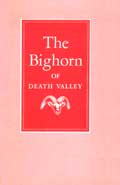.gif)
MENU
![]() Photographs
Photographs
|
Fauna of the National Parks — No. 6
The Bighorn of Death Valley |

|
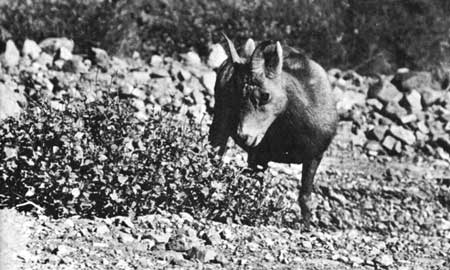
Figure 29.—The accident that
gave Scarface her name could hardly be duplicated on another ewe. Once
photographed for comparison, her identity could be established anywhere
as "positive."
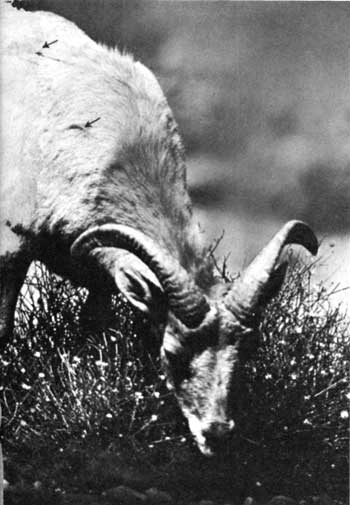
Figure 30.—Rambunctious was
present at Furnace Creek Wash in 1955 and 1956 and at Nevares Spring in
1957. The large scar on the right side, high up, of this
2-year-old-ram, as shown here, the smaller scar on the shoulder, and the
pronounced annular sectioning of the horn-tips made identification
fairly "positive."
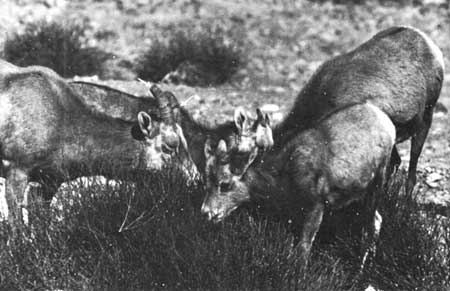
Figure 31.—Old Eighty has
lost her right horntip. The ring near the middle of both horns, over a
quarter of an inch deep, was unique. Whether this groove resulted from
malnutrition during a bad year or from sickness is unknown.
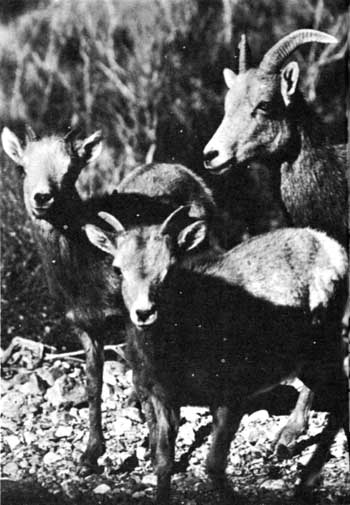
Figure 32.—Relative horn
development is greater in a 6-month-old ram (Bad Boy, foreground) than
in a ewe lamb (Little Whitey), left) of the same age.
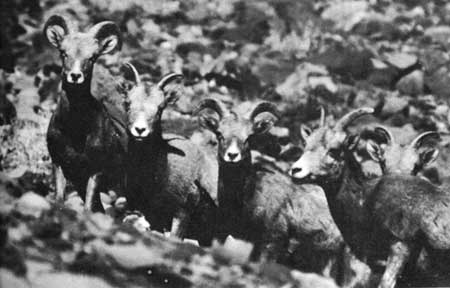
Figure 33.—Second and third
from the left are the same ewe (Little Whitey) and ram (Bad Boy) at 18
months. The trend toward thicker, more outwardly-turned horns continues
in the young ram. Animal at far left also is a young ram, the others
are ewes.
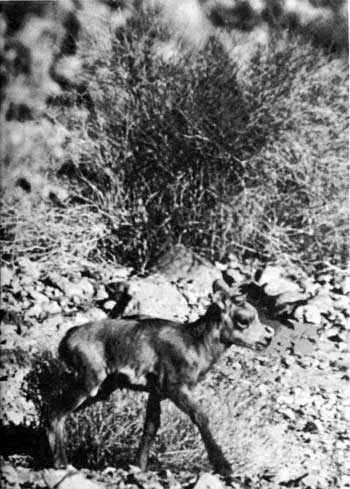
Figure 34.3When Old Mama
returned with her newborn lamb on February 2, 1956, it could scarcely
stand, wobbling precariously as it walked, falling down in the brush and
rocks. Yet by 4 p.m. it had gained enough strength to climb out of the
wash and followed its mother 1-1/2 miles up Pyramid Peak for
bedding.
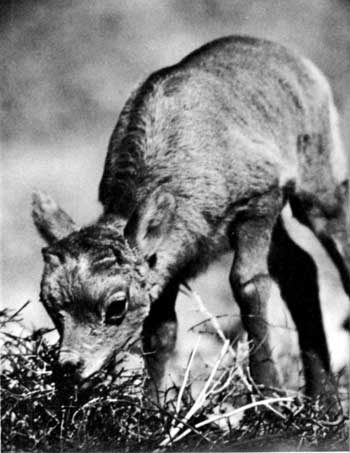
Figure 35.—Within 10 days
Old Mama's lamb was beginning to nibble at the same food its mother ate.
The sparse and rigid character of the desert bighorn forage shown here
is typical.
Continued >>>
 Top
Top
Last Modified: Thurs, May 16 2002 10:00:00 pm PDT
http://www.cr.nps.gov/history/online_books/fauna6/faunap4.htm
![]()
